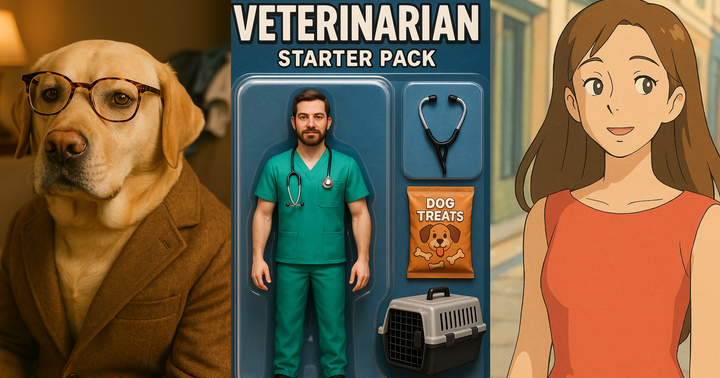How to Use ChatGPT to Edit Videos
Is it possible to edit videos with ChatGPT? Not yet -- but you can use GPT-powered video editors to simplify your edits. This article will tell you more about using AI chatbots and LLMs to make and edit videos easily.
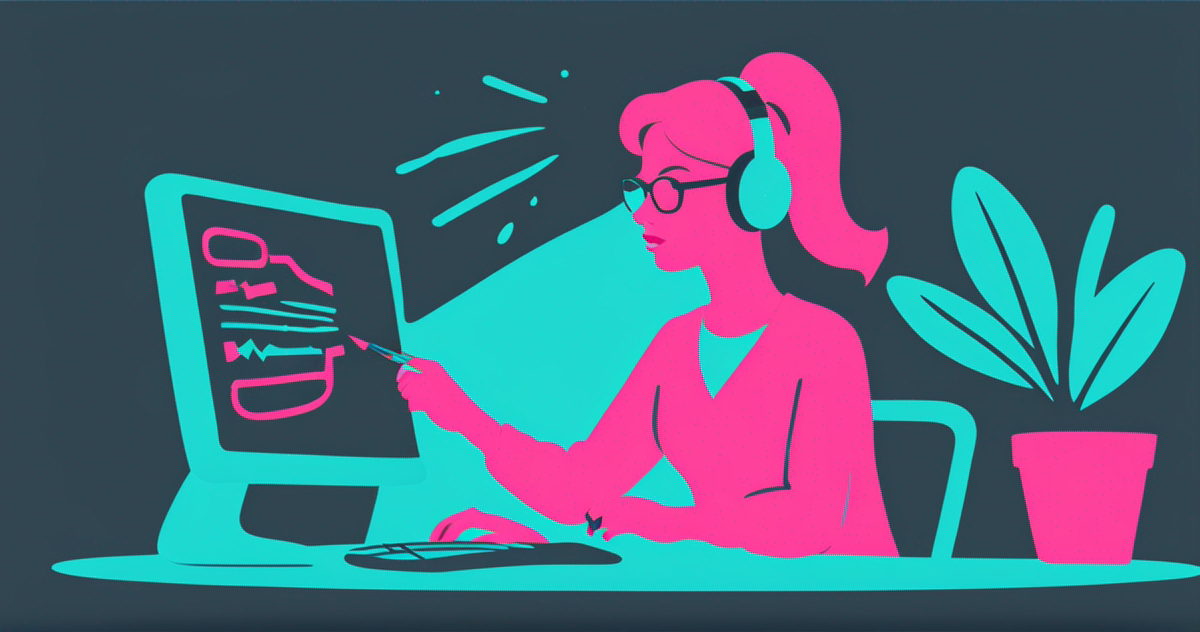
ChatGPT – the AI chatbot developed by OpenAI – is at the forefront of the AI transformation. Content creators can leverage ChatGPT to streamline various aspects of their workflow, from pre- to post-production. But ChatGPT does not support video editing within the app.

To use AI as a part of your video creation workflow, combine ChatGPT with a compatible video editing software instead of using ChatGPT alone. We are creators ourselves with a YouTube channel of almost 200,000 subscribers, and this article will share how we use AI to make more social media videos.
Can ChatGPT Edit Video?
ChatGPT cannot edit videos directly, even if you're a Pro customer using the latest model, GPT 4o. "Current versions do not directly support video editing," said ChatGPT when we asked it this exact question.
If you ask ChatGPT to perform a simple editing task on a video file, it will upload the file and show an "analyzing" loading state. Sometimes, it tries to analyze the file several times before it fails, even for a small video file.
However, ChatGPT will eventually return an error. Mine often says there was a "persistent issue with processing the video entirely in this environment."

Similarly, ChatGPT cannot handle editing tasks with multiple files, like combining videos together or merging audio and video.
GPT 4o is a "multimodal" model, meaning that it can process video inputs as well as text, image, and audio inputs. However, it does not create the new, edited video for you. The ChatGPT environment does not support this type of request.
Can ChatGPT programmatically edit videos?
Often, ChatGPT will return instructions for editing the video on your command line using FFMPEG, an open-source python library. For example, ChatGPT instructed me to install pyheif to convert an HEIC image to a video using my computer. If you're a developer, open your terminal and create a script with the code that ChatGPT guides you to. Then, with the original file in your root directory, run the script to programmatically process the video.
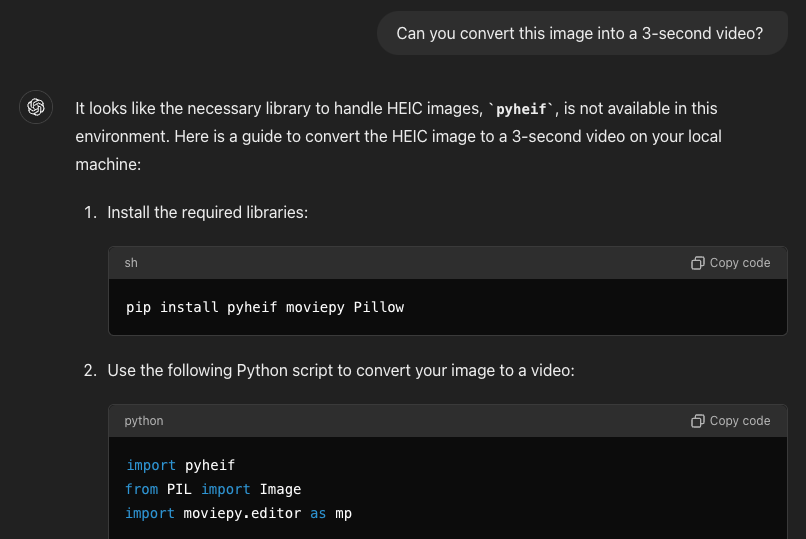
Can Gemini, Perplexity, Meta AI or other LLM chatbots edit video?
Not yet. We tried a basic request to shorten a 10 second video to 5 seconds. I found that Anthropic's Claude does not support video uploads, and Google's Gemini, Perplexity and Meta's AI chatbot will deny requests for editing video as it's "not able to access video files or edit them."

Instead, these LLMs will give you instructions on editing the video yourself using a traditional video editor.

How Can I Use AI to Edit Video?
There are many online video editors, however, that have an embedded version of ChatGPT. For example, Kapwing's Clip Maker leverages AI to identify highlights in a long-form video. If you upload a video over 10 minutes long, you can cut out shareable clips optimized for social media.
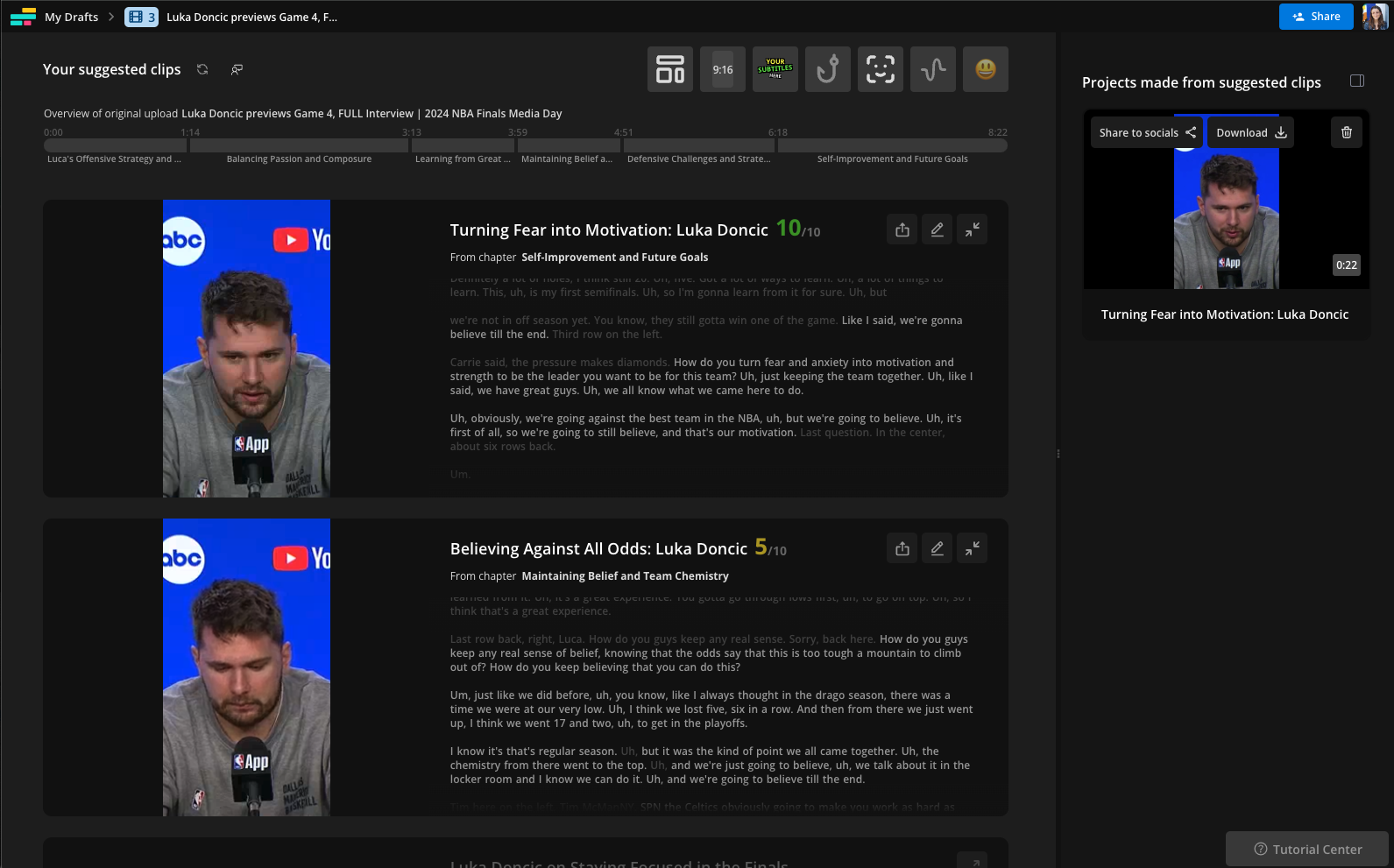
Kapwing also has GPT-powered tools for transforming a script into a video and dubbing videos into a different language. Whisper - the open-source transcription library developed by OpenAI – is embedded into many ASR tools, including the Kapwing caption maker.
AI-powered tools can automatically level the audio across your video and remove background noise, ensuring a clean and professional sound. Try this feature for interviews, podcasts, and other content where audio quality is paramount.
Finally, AI can also be used to generate videos directly. Recently, we've started a faceless video channel on YouTube which is gaining subscribers through automated AI content. The AI Video Generator enables you to transform a script into a social media video (with video footage, background music, and subtitles) in one click.
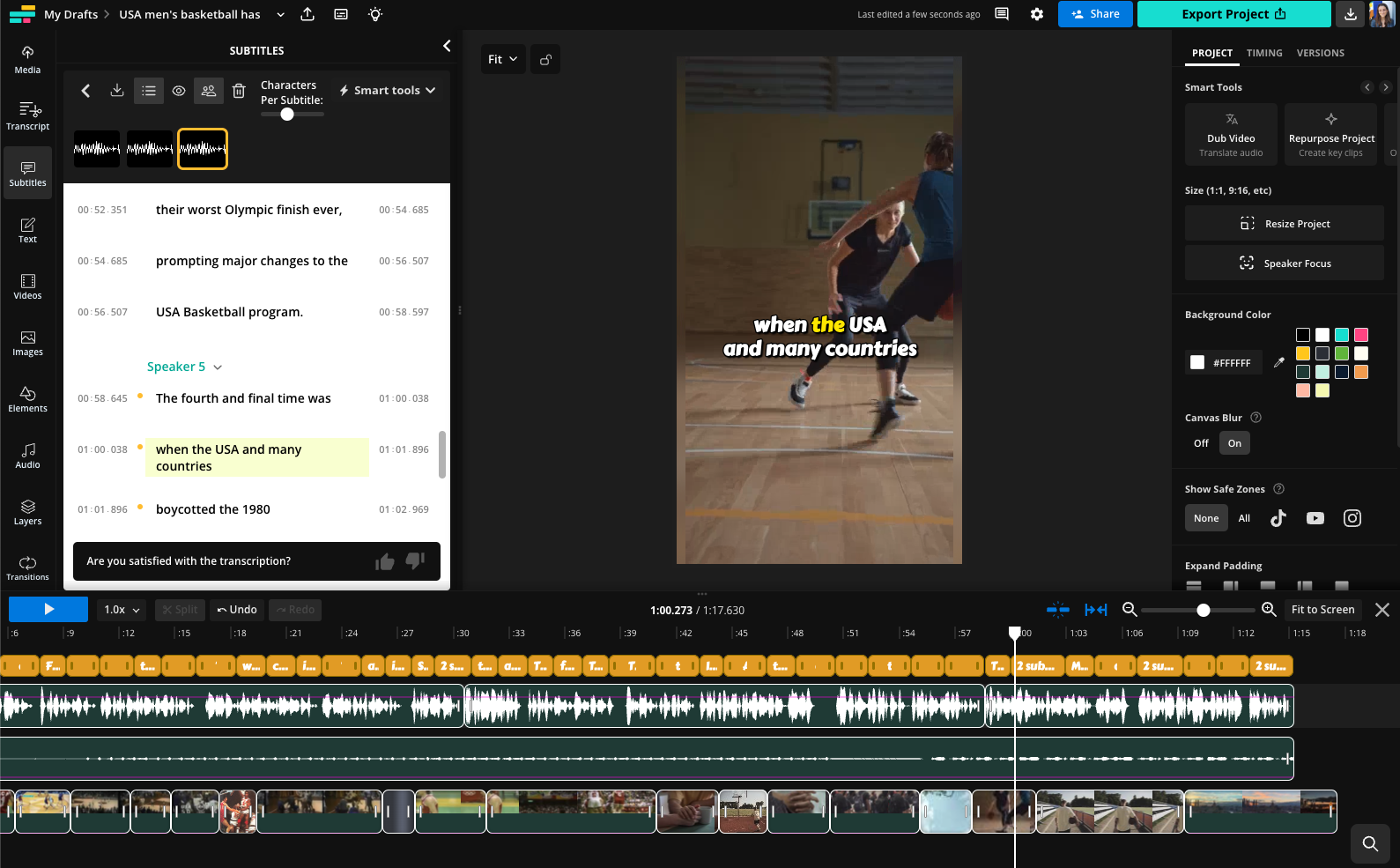
Can Video Editors Use ChatGPT?
Although ChatGPT cannot yet edit videos directly, content creators can use it as a helpful collaborator. Here's a few ways that we've used ChatGPT for running our own TikTok and YouTube channel:
- Writing scripts: By inputting a prompt or topic, ChatGPT can generate a detailed script tailored to the platform and tone that you want to match. However, for informational videos, I prefer using Perplexity as it has fewer hallucinations and more succinct outputs.
- Video translation: Researchers have found that LLMs are amazing at translation and localization. If you have a transcript, you can use ChatGPT to generate a version of the transcript into whatever dialect or language you please. Then, use a tool like Kapwing to input the translated file as subtitles on your video, add a dubbed voiceover for the audio, and even sync the lips of the speaker with the translated text.
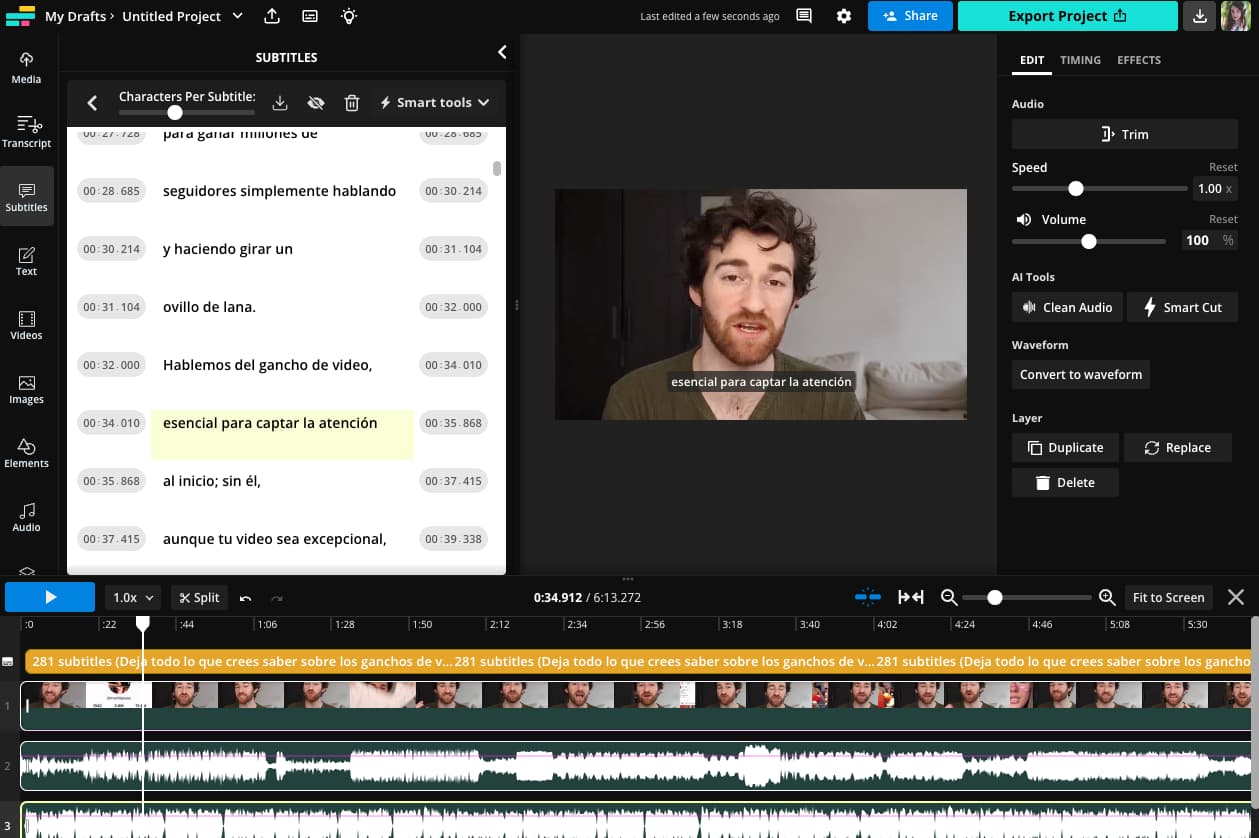
- Brainstorming video effects: ChatGPT can take videos as an input. If a creator uploads a video or the video's transcript, they can ask ChatGPT for suggestions on sound effects, B-Roll, overlays, cuts, and video effects.
- Generating images with AI: ChatGPT has DallE, the image generation model made by OpenAI, embedded into the chatbot. If you prompt it to generate an image, you can create a brand new image for your video. Soon, OpenAI will also launch an AI video generation model called Sora. We've found generated useful for YouTube thumbnail backgrounds, surreal or abstract overlays, and absurd or satirical images. AI image generation is embedded directly in the Kapwing images tab.

Will ChatGPT Edit Videos in the Future?
It is likely that GPT-5, expected some time in 2024, will support video outputs. In a conversation with Bill Gates on the Unconfuse Me podcast, Sam Altman said that an upcoming release of GPT-5 that will be “fully multimodal with speech, image, code, and video support.”
OpenAI also recently announced that they're testing an "Advanced Video" feature which may enable users to create video as an output rather than just as an input. After getting feedback from a group of alpha testers in summer 2024, the company plans to release this "video mode" later this year.
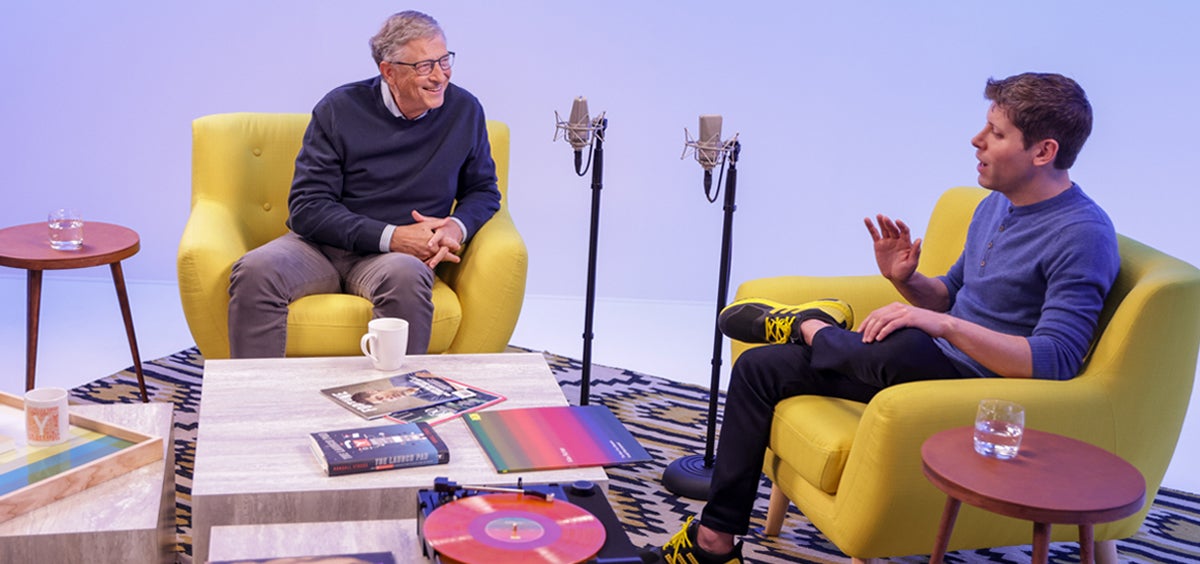
For ChatGPT to support video editing, OpenAI's engineering team would need to build a cloud video processor so that the environment can process millions of videos each day. Video storage, compute, and hosting are expensive, but cash is no problem for the mega-startup.
For OpenAI, the harder problem will be building a graphical interface that allows users to preview and tweak edits before they're processed. Even a request as simple as "Make this video file 5 seconds long" is ambiguous as the start time is undefined. With a text input box, ChatGPT users are seriously constrained compared to graphical editors like Kapwing and Adobe Premier. So, it's not clear how much video editing will be supported in ChatGPT, even after the release of GPT-5
As these technologies develop, there are concerns about misuse, such as the creation of deepfake videos, use of unlicensed voice clones, and the spread of misinformation. For legitimate creative and professional purposes, however, the integration of AI like ChatGPT into video editing workflows could significantly enhance productivity and creative possibilities in the future.

